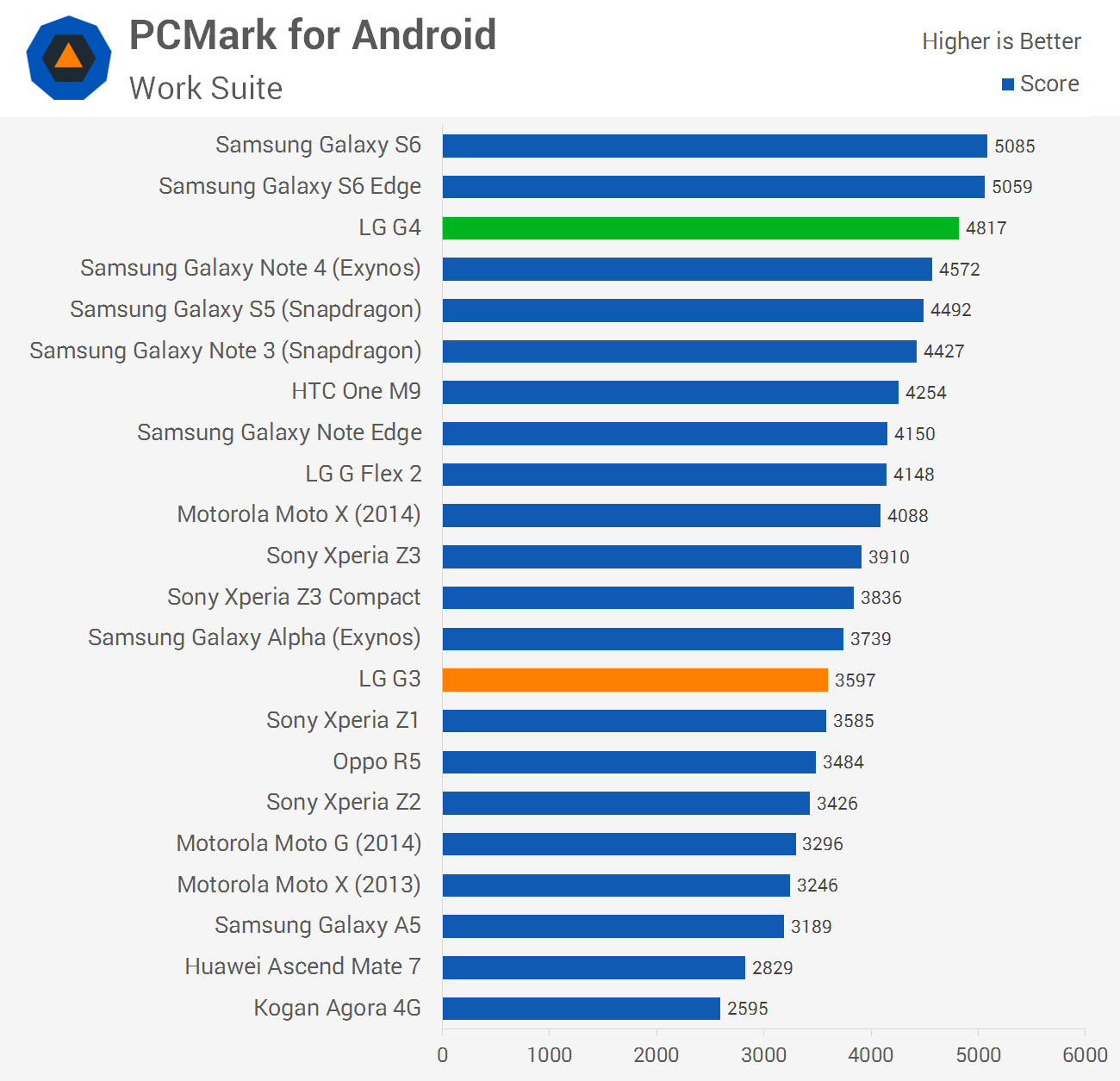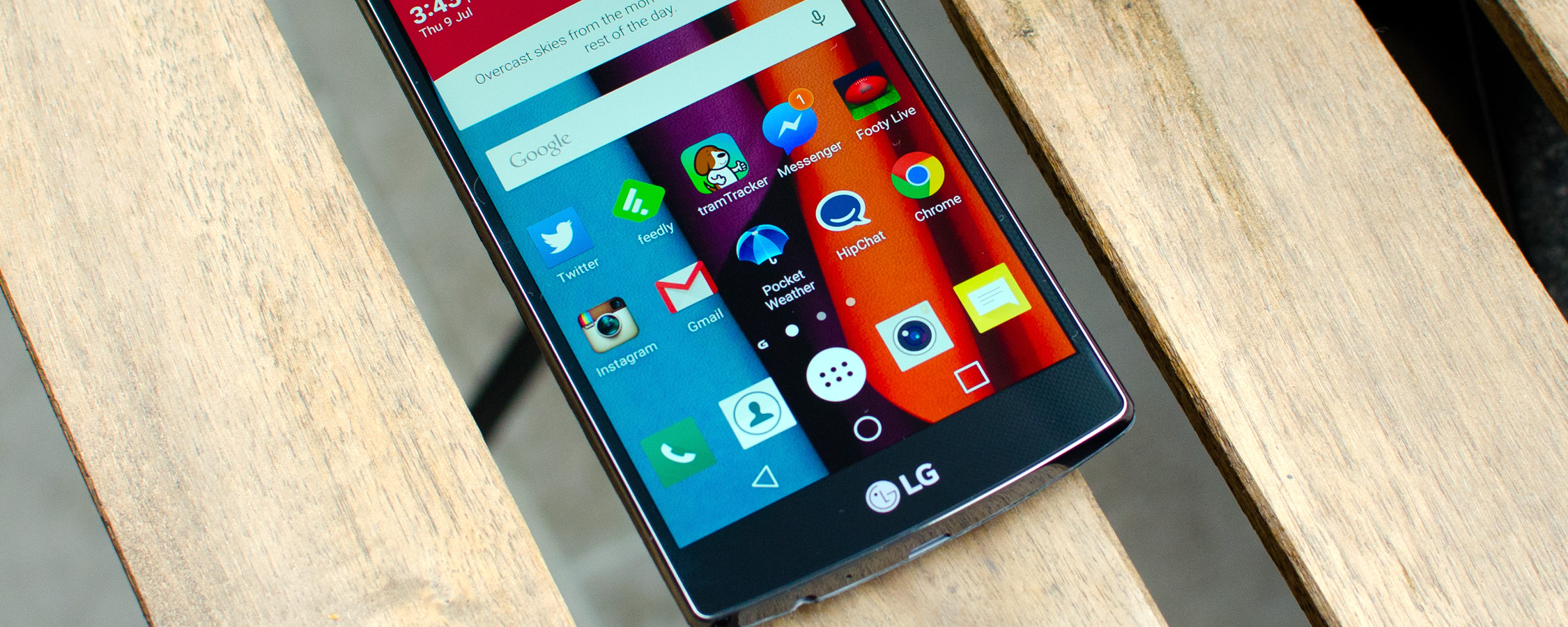Hardware Overview and CPU Performance
In LG's last high-end smartphone, the G Flex 2, the company decided to go all-out on the SoC front, opting to use Qualcomm's Snapdragon 810. While peak performance from this SoC was impressive, it suffered from pretty severe throttling after a few minutes of use; an issue we also saw from the HTC One M9. The issues with the Snapdragon 810's throttling, heat output and power consumption is essentially why LG decided not to use this SoC in the G4.
Instead, the LG G4 uses Qualcomm's Snapdragon 808 SoC. The 808 is similar to the 810, but it features only six CPU cores rather than eight, which helps reduce the need for throttling due to heat and power concerns. Both the 808 and 810 are built using a 20nm HPm manufacturing process, and both feature an ARMv8-A architecture that's fully 64-bit compatible.
The Snapdragon 808 comes with a dual-core ARM Cortex-A57 CPU cluster clocked at 1.82 GHz, plus a quad-core Cortex-A53 cluster clocked at 1.44 GHz. The use of a 2+4 design is uncommon among today's performance SoCs, with most other designs (including the Snapdragon 810 and Samsung's Exynos 7420) opting for 4 A57s alongside 4 A53s. However, as the A57s are designed for high-performance tasks and the A53s designed for energy efficiency, dropping two A57s from the SoC shouldn't have a huge effect on overall performance.
Compared to the Snapdragon 810, the 808 is downgraded in several other ways. Instead of the Adreno 430 GPU, Qualcomm has used an Adreno 418, which should deliver performance similar to the Snapdragon 805's Adreno 420. There's also a 64-bit LPDDR3 memory controller, which clocked at 933 MHz provides 14.9 GB/s of bandwidth, down from 25.6 GB/s of bandwidth from the 810's 128-bit controller.
For connectivity we're looking at the standard array of features: Wi-Fi 802.11a/b/g/n/ac on 2.4 and 5.0 GHz; Bluetooth 4.1; and IZat Gen8C GPS+GLONASS. The Snapdragon 808 supports up to Category 9 LTE and 3x20 MHz carrier aggregation via Qualcomm's integrated "X10 LTE" chip, alongside VoLTE, HD Voice, HSPA+, CDMA, and GSM/EDGE support.
In the LG G4 specifically, we're looking at 3 GB of RAM, and 32 GB of internal NAND plus microSD card expansion. NFC support is provided by a separate chip, and thanks to the inclusion of the Snapdragon 808, the G4 features functionality such as 4K HEVC decode and Qualcomm Quick Charge 2.0.
During my time with the G4, the device felt just as fast as the Snapdragon 810 devices I had used, despite a performance disadvantage on paper. Some of this will be down to the Snapdragon 808's need to throttle less frequently, and also how many typical everyday tasks don't really require the power of a high-end SoC to feel smooth and responsive. The G4 felt very slightly slower to use than the Galaxy S6, most noticeable while loading applications, though the difference is essentially insignificant.
Let's see how the LG G4 and the Snapdragon 808 performs in benchmarks.








Compared to the LG G3 with its Snapdragon 801 SoC, the Snapdragon 808 in the LG G4 is around 30% faster on the CPU side and comes with support for 64-bit code. The 808's use of a hexa-core CPU sees its performance beat the Snapdragon 805-powered Samsung Galaxy Note 4 by 23%.
The results comparing the LG G4 to the LG G Flex 2, which came with a Snapdragon 810 SoC, are interesting. Due to the Snapdragon 810's throttling concerns, the Snapdragon 808 sees performance that matches the Snapdragon 810 on average in CPU-bound tasks, despite how the 810 comes with two more Cortex-A57 CPU cores. This is a great result for the Snapdragon 808, and more evidence damning the performance of the Snapdragon 810.
However, the Samsung Exynos 7420 SoC in the Galaxy S6 comprehensively defeats the G4's Snapdragon 808 in CPU-bound tasks to the tune of 13%.

